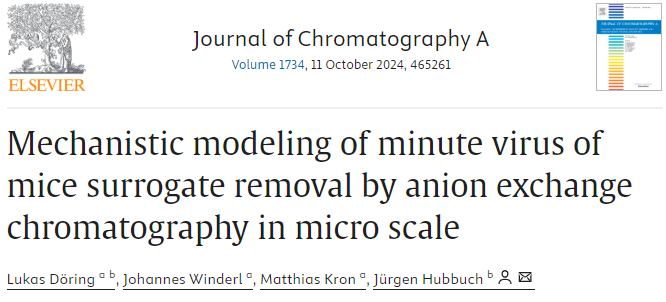Article: Mechanistic modeling of minute virus of mice surrogate removal by anion exchange chromatography in micro scale

Biopharmaceutical products are often produced in Chinese hamster ovary (CHO) cell cultures, which release retrovirus-like particles and are vulnerable to infections by adventitious viruses. Therefore, it is a regulatory requirement that downstream purification steps for biopharmaceuticals can remove viruses from feedstocks. Anion exchange chromatography (AEX) is one of the downstream unit operations that is most frequently used for this purpose and claimed for its capability to remove viruses. However, the impact of various process parameters on virus removal by AEX is still not fully understood. Mechanistic modeling could be a promising way to approach this gap, as these models require comparatively few experiments for calibration. This makes them a valuable tool to improve understanding of viral clearance, especially since virus spiking studies are costly and time consuming.
In this article, published in Journal of Chromatography A, and its accompanying poster, Lukas Döring, Doctoral Researcher Process Science – in collaboration with Johannes Winderl, Process Manager Process Science, Matthias Kron, Senior Director Process Science Downstream of Rentschler Biopharma and Professor Jürgen Hubbuch from the Karlsruhe Institute of Technology – discusses how the virus clearance of a MVM mock virus particle by Q Sepharose FF resin can be accurately described by mechanistic modeling.
To the article (external link)
Download the Poster “Mechanistic modeling of Minute Virus of Mice Virus-Like Particle removal by anion exchange chromatography” here:

